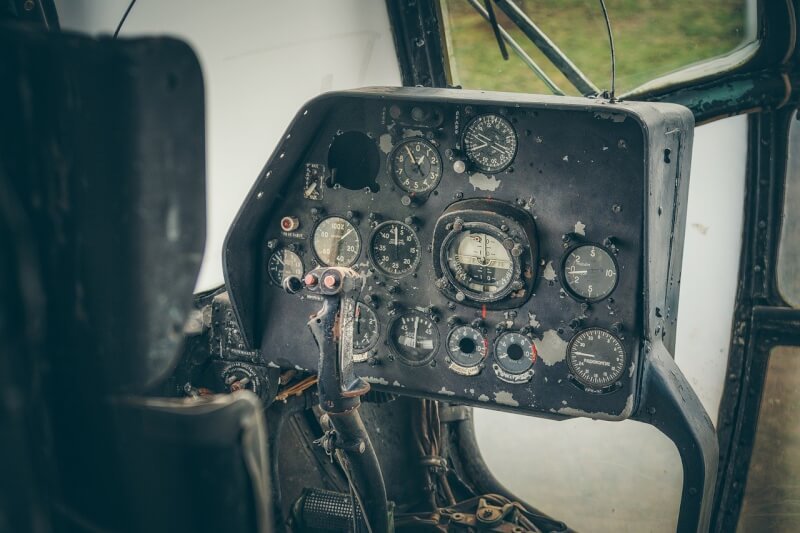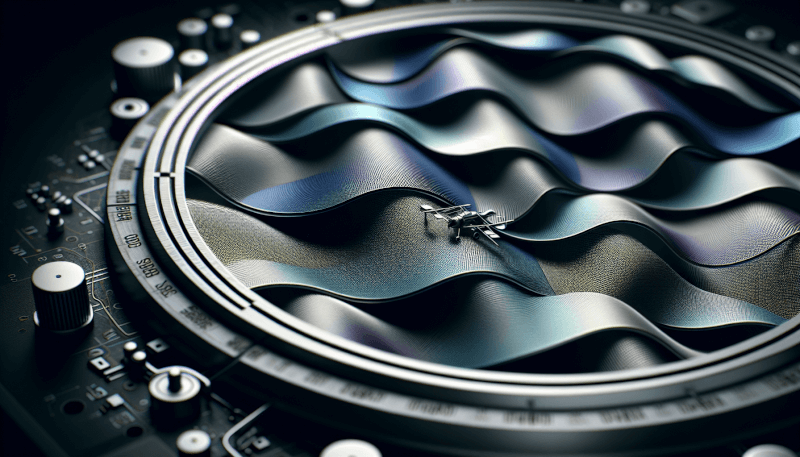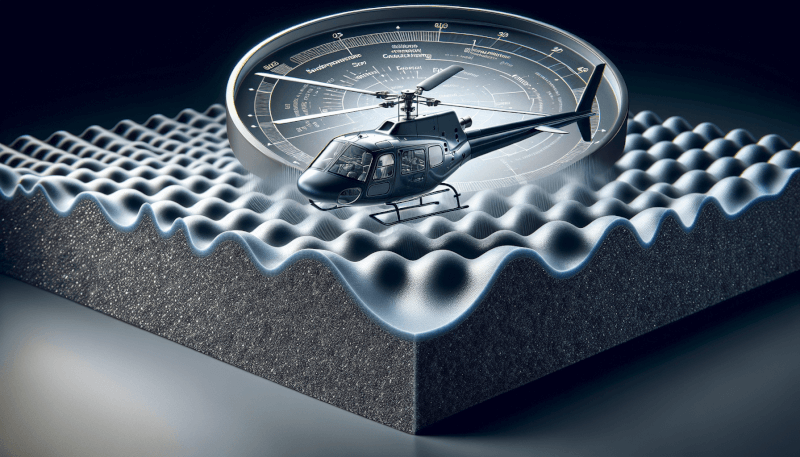Are you tired of the loud noise your RC heli makes while you’re flying it? If so, we have some great tips for you! In this article, we will explore the top ways you can minimize the noise of your RC heli. By following these simple yet effective strategies, you’ll be able to enjoy a quieter and more peaceful flying experience without disturbing your neighbors or causing any unwanted attention. So, let’s get started and discover how you can reduce the noise of your RC heli and fly in tranquility.
Choose a Quieter Model
Opt for electric-powered helicopters
When it comes to minimizing the noise of your RC helicopter, opting for an electric-powered model is a great choice. Electric-powered helicopters run much quieter compared to their nitro-powered counterparts. The absence of a loud combustion engine makes electric helicopters a more peaceful option, allowing you to enjoy your flights without disturbing others around you.
Consider smaller-sized helis
Another way to reduce the noise of your RC heli is by choosing a smaller-sized model. Smaller helis tend to be quieter as they have smaller rotor blades and motors, resulting in a lower noise output. Additionally, they are generally designed to fly at lower speeds, which contributes to a quieter flight experience. So if you’re looking for a heli that won’t create too much noise, considering a smaller-sized model is a smart choice.
Look for helis with noise-reducing features
When shopping for a new RC heli, keep an eye out for models that come with noise-reducing features. Some manufacturers have designed helis with specific features to minimize noise levels. These features can include specially designed rotor blades, enhanced motor enclosures, and advanced sound-absorbing materials. Choosing a heli with these noise-reducing features can significantly contribute to a quieter and more enjoyable flying experience.
Use Noise Dampening Materials
Apply adhesive foam tape to the body and rotor blades
One effective way to reduce the noise of your RC heli is to apply adhesive foam tape to the body and rotor blades. This foam tape acts as a vibration dampener, absorbing the vibrations and reducing the noise produced by the helicopter. By applying this tape strategically, especially in areas where the body and rotor blades come into contact, you can significantly decrease the noise output of your heli.
Use rubber grommets on the screws and mounts
Rubber grommets are another useful tool for minimizing noise in your RC heli. By using rubber grommets on the screws and mounts that hold various components in place, you can effectively isolate vibrations and prevent them from transferring to the helicopter’s structure. This simple addition can make a noticeable difference in reducing the overall noise level of your heli.
Install sound-absorbing material inside the helicopter
To further dampen the noise of your RC heli, consider installing sound-absorbing material inside the helicopter’s body. There are various materials available specifically designed to absorb sound and reduce noise levels. By lining the inside of the heli with this material, you can help minimize noise by preventing it from bouncing off the internal surfaces and radiating outward.
Wrap the motor and electronics in vibration-dampening foam
The motor and electronics of your RC heli can be significant contributors to the overall noise production. To address this, consider wrapping the motor and electronics in vibration-dampening foam. This foam will help reduce the vibrations produced by these components, leading to a quieter flight. Additionally, securing the foam in place with zip ties or adhesive will ensure it stays in position and continues to effectively dampen vibrations.

Balance and Align Rotors
Check and adjust the blade tracking
Proper blade tracking is crucial for reducing noise and ensuring smooth operation of your RC heli. To check the blade tracking, observe the movement of the rotor blades while the heli is in flight. If you notice any blade wobble or inconsistencies, adjustments will be required. By carefully adjusting the pitch and alignment of each rotor blade, you can achieve proper blade tracking, resulting in reduced noise and improved performance.
Ensure the rotor blades are balanced
Imbalanced rotor blades can cause vibrations and increase the noise produced by your RC heli. To address this, it’s essential to ensure that the rotor blades are properly balanced. There are specialized tools and techniques available for balancing the blades, such as using a blade balancer or adding small weights to adjust the balance. By achieving proper balance, you can significantly reduce unwanted vibrations and minimize noise.
Align the rotor blades properly
In addition to balancing the rotor blades, proper alignment is equally important for minimizing noise. Misaligned rotor blades can lead to excessive vibrations and an increase in noise levels. To align the blades properly, use a pitch gauge or a laser alignment tool to ensure that each blade has the correct pitch angle. By maintaining proper alignment, you can achieve smoother flight and a quieter operation.
Ensure Proper Maintenance
Keep the heli’s moving parts well lubricated
Regular maintenance is key to ensuring that your RC heli operates smoothly and quietly. One essential maintenance task is to keep the heli’s moving parts well lubricated. Apply lubrication to the bearings, gears, and other rotating components as recommended by the manufacturer. Well-lubricated parts experience less friction, resulting in reduced noise during flight.
Regularly inspect and replace worn components
Worn or damaged components can contribute to increased noise levels in your RC heli. Regularly inspect your helicopter for any signs of wear or damage, such as worn gears or loose fittings. If you notice any issues, make sure to replace the worn components promptly. By keeping your heli in good condition, you can minimize noise and maintain optimal performance.
Check for loose fittings and tighten them
Loose fittings can cause vibrations and rattling noises during flight. It’s essential to regularly check for any loose fittings in your RC heli and tighten them as needed. Pay attention to screws, nuts, and bolts that secure various components in place. Ensuring that all fittings are tight and secure will help prevent unnecessary vibrations and noise.
Clean and oil the engine regularly
If you have a nitro-powered RC heli, the engine can be a significant source of noise. To keep the engine running smoothly and quietly, it’s crucial to clean and oil it regularly. Make sure to follow the manufacturer’s instructions for cleaning and lubricating the engine. Regular maintenance of the engine will not only reduce noise but also prolong its lifespan.

Use High-Quality Parts
Invest in quality rotor blades
Investing in high-quality rotor blades can have a significant impact on the noise output of your RC heli. Cheap or low-quality blades are more prone to vibrations and can produce more noise during flight. Opt for rotor blades made from high-quality materials such as carbon fiber, as they tend to be more rigid and less prone to vibrations. High-quality blades will not only minimize noise but also improve the overall performance and stability of your heli.
Opt for high-performance servos and motors
The servos and motors in your RC heli can greatly affect noise levels. High-performance servos and motors are designed to operate more efficiently, resulting in reduced vibrations and noise. When choosing servos and motors for your heli, look for reputable brands known for producing high-quality and low-noise components. Investing in these high-performance parts will considerably contribute to a quieter flying experience.
Choose well-built and durable frames and chassis
The construction of your RC heli’s frame and chassis can also impact noise levels. Well-built and durable frames and chassis are better able to absorb vibrations and minimize noise. When selecting a new heli or upgrading your current one, opt for models with sturdy construction and reliable materials. By choosing a heli with a robust frame and chassis, you can significantly reduce unwanted noise.
Modify Blade Design
Switch to carbon fiber rotor blades
Switching to carbon fiber rotor blades is a popular modification among RC heli enthusiasts looking to reduce noise. Carbon fiber blades are lightweight, rigid, and less prone to vibration compared to plastic or wooden blades. This reduction in vibration leads to a quieter flight experience. However, it’s important to note that carbon fiber blades can be more expensive, so consider your budget when making this modification.
Try different blade shapes and sizes to find a quieter option
Blade shape and size can also impact the noise produced by your RC heli. As vibrations and noise are affected by airflow dynamics, experimenting with different blade designs can be beneficial. Some blade shapes and sizes may naturally produce less noise depending on their aerodynamic properties. Try different options and observe the noise output during flight to find a blade that offers a quieter experience.
Experiment with blade tip modifications
Another modification worth considering is experimenting with blade tip modifications. By adjusting the shape or adding attachments to the tip of the rotor blades, you can potentially reduce noise. Some enthusiasts have found that adding vortex generators or winglets to the blade tips can help minimize noise by improving airflow and reducing turbulence. It’s important to proceed with caution and carefully assess the impact of these modifications on the heli’s overall performance and stability.

Adjust Gear Mesh
Check and adjust the gear mesh regularly
The gear mesh, which is the contact between the teeth of the gears, can impact the noise produced by your RC heli. It’s crucial to regularly check and adjust the gear mesh to ensure proper alignment. If the gear mesh is too tight or too loose, it can cause excessive noise during operation. Follow the manufacturer’s instructions for checking and adjusting the gear mesh and make any necessary adjustments to achieve optimal performance and reduced noise.
Ensure the gear teeth are in proper alignment
In addition to adjusting the gear mesh, ensuring that the gear teeth are properly aligned is essential for minimizing noise. Misaligned gear teeth can result in increased friction and vibration, leading to louder operation. Carefully inspect the gears and make sure they are properly aligned. If you notice any misalignment, make the necessary adjustments or consider replacing worn gears to achieve quieter and smoother performance.
Use quality lubricants for the gears
Proper lubrication is crucial for reducing noise in the gears of your RC heli. High-quality lubricants designed specifically for RC helis will ensure smooth gear operation and minimize friction. Regularly apply lubrication to the gears as recommended by the manufacturer. Using the right lubricants will help reduce noise and extend the lifespan of your heli’s gear components.
Consider Noise-Reducing Accessories
Install a muffler or silencer on the engine
For nitro-powered RC helis, installing a muffler or silencer on the engine can significantly reduce noise levels. Mufflers and silencers are specifically designed to dampen the sound produced by the engine’s exhaust. With a properly installed muffler or silencer, you can enjoy a quieter flight while minimizing noise disturbance to others around you. Make sure to choose a compatible muffler or silencer that is designed for your specific engine model.
Use noise-reducing exhaust pipes
In addition to a muffler or silencer, noise-reducing exhaust pipes can further contribute to noise reduction in nitro-powered RC helis. These exhaust pipes are specially designed to minimize noise while directing the exhaust gases away from the helicopter. By replacing the stock exhaust pipe with a noise-reducing alternative, you can significantly reduce the overall noise produced by your heli.
Try a noise-canceling muffler system
For those looking for maximum noise reduction, noise-canceling muffler systems are worth considering. These advanced systems utilize technology to actively cancel out unwanted noise frequencies produced by the engine. By generating sound waves that are out of phase with the original noise, noise-canceling muffler systems effectively reduce noise levels. While these systems can be more expensive, they provide a highly effective solution for those seeking a quieter flight experience.

Fly in Open Areas
Avoid flying in residential areas or near noise-sensitive locations
When flying your RC heli, it’s important to choose your flying location wisely. To minimize noise disturbance, avoid flying in residential areas or near noise-sensitive locations such as schools or hospitals. Instead, opt for open, wide spaces where noise is less likely to cause a disturbance. By being mindful of your surroundings and flying in appropriate areas, you can enjoy your flying hobby while respecting others’ peace and quiet.
Choose wide, open spaces for flying
Selecting wide and open spaces for flying is key to reducing the noise impact of your RC heli. Flying in open areas allows airflows to dissipate noise more effectively, resulting in a quieter flight experience. Look for parks, fields, or designated RC flying sites that provide ample space and minimize noise reflection off surrounding structures. By flying in open areas, you can enjoy your flights without worrying about noise complaints or disturbing others.
Notify neighbors in advance and be mindful of noise levels
If you live in a residential area and fly your RC heli in your backyard, it’s considerate to notify your neighbors in advance. Inform them about your hobby and any steps you’ve taken to minimize noise levels. By being proactive and open with your neighbors, you can establish understanding and mitigate any potential noise-related concerns. Additionally, always be mindful of the noise levels when flying at home, keeping flights shorter or adjusting settings to reduce noise as much as possible.
Invest in a Flight Simulator
Practice flying with a simulator
One often overlooked method for minimizing noise is improving your piloting skills. Investing in a flight simulator and regularly practicing flying on it can help you gain better control and reduce excessive noise during real flights. Flight simulators allow you to hone your skills, practice maneuvers, and experiment with different settings in a virtual environment. By becoming a more skilled pilot, you can minimize unnecessary noise and enjoy a smoother, quieter flight experience.
Gain better control and reduce excessive noise by improving piloting skills
Improving your piloting skills directly contributes to noise reduction during flights. By controlling your RC heli more precisely, you can avoid sudden, unnecessary movements that often result in increased noise. Focusing on smooth and precise control inputs allows for a quieter flight while improving overall flight performance. Regular practice and continuous improvement of your piloting skills will ultimately result in a more enjoyable and quieter RC heli experience.
In conclusion, there are various ways to minimize the noise of your RC heli. From choosing a quieter model to employing noise-dampening materials, ensuring proper maintenance, using high-quality parts, modifying blade design, adjusting gear mesh, considering noise-reducing accessories, flying in open areas, and investing in a flight simulator, each step can significantly contribute to enjoying a quieter flight. By implementing these tips and techniques, you can not only minimize noise disturbance to those around you but also enhance your own flying experience with a more peaceful and enjoyable environment. Happy flying!



